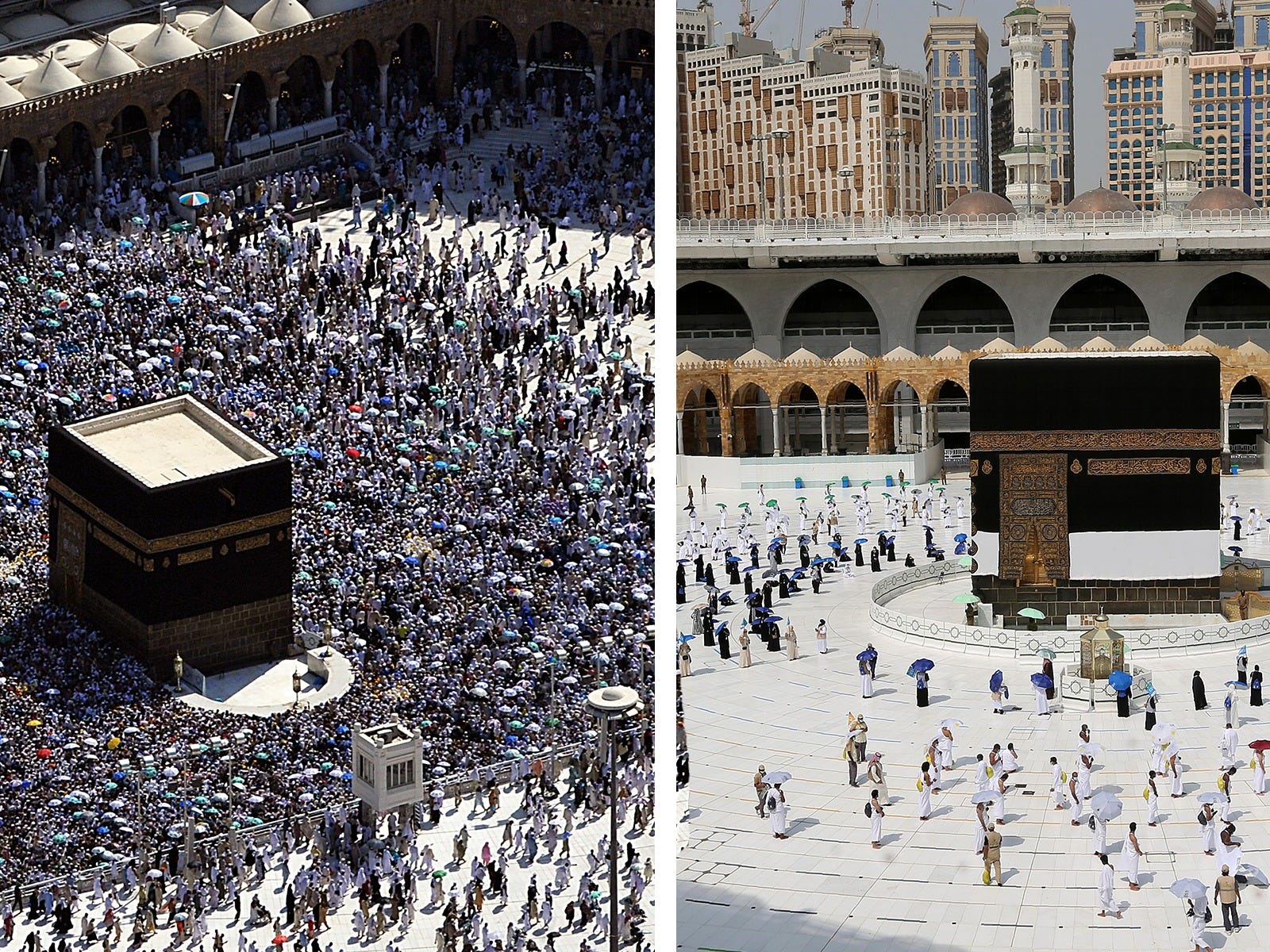- Over two million people from across the world visit Mecca every year to go on a pilgrimage, the Hajj, during the last month of the Islamic year.
- This year, only about 10,000 people are expected to attend, per rules set forth by the Saudi Arabian government.
- Pilgrims are expected to remain in quarantine before starting the pilgrimage and to observe social distancing during it.
- Take a look inside what many Muslims consider one of the holiest practices, now being undertaken with coronavirus-era regulations that involve putting holy water in a plastic bottle.
- Visit Business Insider’s homepage for more stories.
Ruqayyah Moynihan contributed to this report.
Approximately two million visitors make a religious pilgrimage to Mecca, Saudi Arabia, each year.

Source: Middle East Eye
Mecca is one of the holiest cities in the Islamic religion. All Muslims who are physically and financially able to do so are strongly encouraged to make the pilgrimage, the Hajj, at least once in their lifetime.

Pilgrims usually undertake the Hajj during the last month of the Islamic year, Dhu al-Hijjah, and around the same time as Eid al-Adha. It usually takes place over several days and as the Islamic calendar is lunar and shorter than the Gregorian calendar, the dates change from year to year.

Source: Middle East Eye
During the Hajj, travelers take part in prayers with other Muslims from across the world. They engage in rituals like stoning a wall and walking to different spots of religious significance in "solidarity with Abraham who is seen as the father of monotheism," Dr. Ibrahim Moosa of Notre Dame University told Newsweek in 2018.

Source: National Geographic, Newsweek
Many Muslims consider the Hajj to be as much contemplative and symbolic as it is physical — a chance to repent for past sins and start afresh. According to Islamic scripture, the prophet Abraham almost sacrificed his family in a test of faith to God. The Hajj and Eid al-Adha pay tribute to this sacrifice.

Source: Perspective in Religious Studies, Vox
This is what crowds looked like in 2012 when over three million attendees made their way to Mecca. That year saw the highest attendance in a ten-year period, according to Statista.

Source: Statista
This year, with the coronavirus pandemic continuing to rage across the globe, the Hajj looks very different. It started on July 28 and will run to the end of the week.

A maximum of 10,000 pilgrims are expected to participate this year — a significant scale-back from the usual two million-strong crowd.

Source: Al Jazeera
In a statement shared on Twitter, the foreign ministry said only those who already live in Saudi Arabia will be allowed to perform the Hajj.

Source: Al Jazeera, Twitter/@KSAmofaEN
In 2018, the New York Times wrote that about a quarter of each year's pilgrims come from within the country.

Source: The New York Times
This year, visitors are required to follow standard coronavirus-era procedures, like covering their faces, undergoing temperature checks, and remaining in quarantine before undertaking the pilgrimage.

Source: Al Jazeera, CNN
Al Jazeera reported that in addition to all of the previous steps, they're are also given wristbands that monitor their movements.

Source: Al Jazeera
Pilgrims can only drink holy water from Zamzam well, a holy spot located within the mosque in Mecca, if it comes pre-packaged in plastic bottles.

Sources: Washington Post
They are also expected to bring their own prayer mats to limit contact with other people.

Sources: Washington Post
Devotees are prohibited from coming in any contact at all with the Kaaba — a sacred black cube-shaped structure located at the center of the Masjid al-Haram. Normally, one of the steps of Hajj involves walking about the Kaaba in a counter-clock direction, with many touching and kissing it at some point.

Source: Al Jazeera
Part of the pilgrimage involves visitors collecting pebbles that they throw from a bridge to symbolically fight back against evil. This year, the tiny rocks will come packaged and sanitized ahead of time.

Source: Reuters, Washington Post
Photos shared by the Saudi Ministry of Media show workers sanitizing common spaces ...

... as well as the pilgrims' luggage.

About 2.5 million Muslims made the trip in 2019. The pilgrimage is a significant source of income for the Saudi Arabian government.

In 2015, over 700 people died and 900 were injured in a stampede in Mina, about two miles away from Mecca. Journalist Khaled al-Meena told CNN that a large number of people trying to finish their rituals in a speedy manner might have been the reason behind the incident.

Source: CNN
